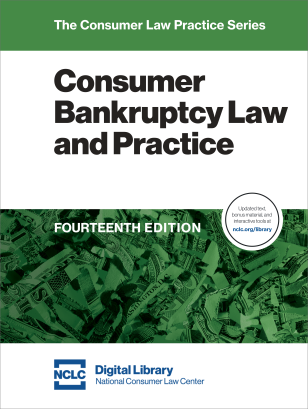Now that new Bankruptcy Rules 3015(c) and 3015.1 require that chapter 13 plans follow a standard format, the key to many successful chapter 13 plans is the inclusion of “nonstandard provisions.” These provisions address important issues for the consumer regarding the chapter 13 plan not listed on Official Form 113 or a standardized chapter 13 plan adopted in a local bankruptcy district.
An example might be a provision providing that the debtor will deal with student loans by enrolling or continuing to participate in an income-driven repayment plan. Another example would be a nonstandard provision preventing private student loan creditors from enforcing a bankruptcy clause in the loan documents against a nondebtor co-obligor.
Often such nonstandard provisions are essential to saving a home, such as a provision dealing with the mortgage creditor’s application of plan payments to the debtor’s account. Other nonstandard provisions might deal with the sale of property, assumption of a residential lease, vesting of property in a mortgage creditor who refuses to foreclose, and disposition of funds in case of conversion or dismissal.
NCLC Provides Sample Language for Over 35 Such Nonstandard Plan Provisions
Because of the importance of these nonstandard provisions, NCLC has updated the digital version of Consumer Bankruptcy Law and Practice Appx. G, Form 22 to now include sample language for over thirty-five such nonstandard plan provisions. NCLC has selected provisions that frequently should be utilized to insure the success of a chapter 13 plan. The plan provisions can be copy/pasted into a particular plan or all thirty-five can be downloaded and saved as a reference tool.
How to Utilize Nonstandard Provisions
Attorneys have been required since December 1, 2017, to prepare chapter 13 plans using either Official Form 113 or a local plan form that has been adopted in the judicial district where the case is filed. Both the national and local forms provide a section where the debtor may include “nonstandard provisions,” which are defined as provisions “not otherwise included in the Official or Local Form or deviating from it.”
To be given effect, these provisions must be included in the section of the plan designated for nonstandard provisions (such as section 8 of Official Form 113). They also must be highlighted in a notice at the beginning of the plan, by the checking of a box indicating whether or not nonstandard provisions are included.


